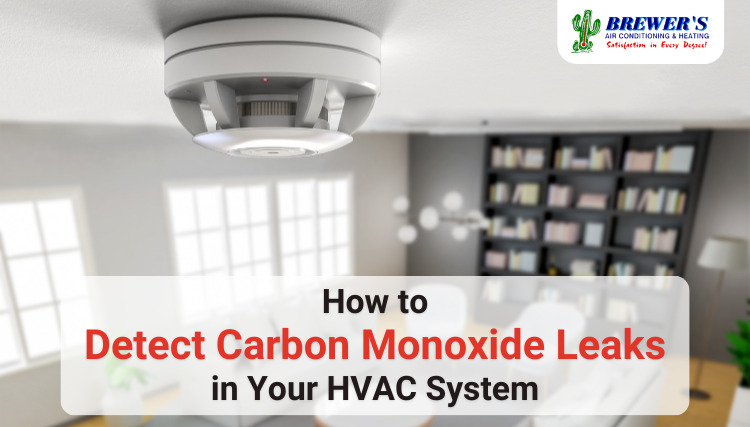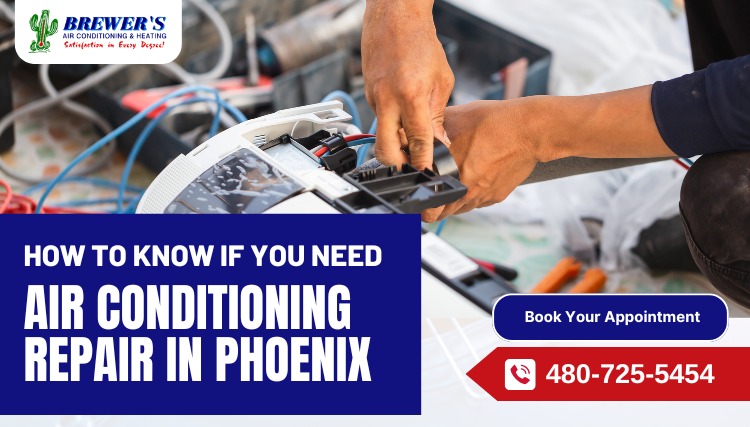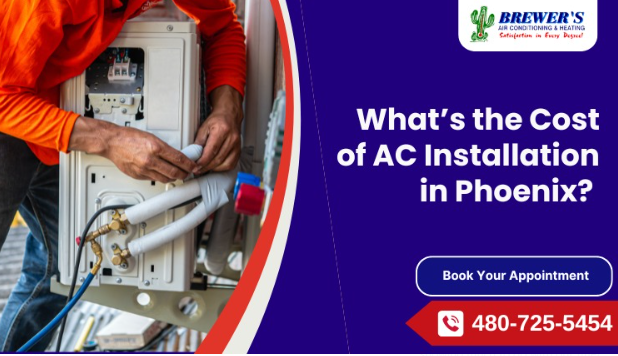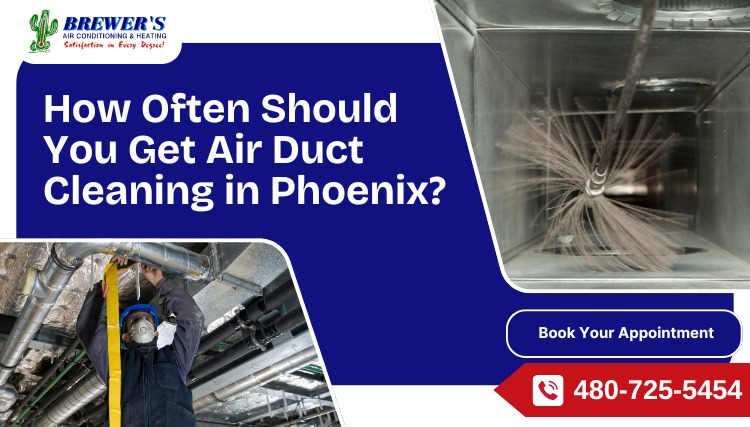
Carbon monoxide (CO) is a silent threat that can emerge from your HVAC system without warning. It’s a colorless, odorless gas produced during incomplete combustion in appliances like gas furnaces and water heaters. Prolonged exposure to CO can cause severe health issues and even be fatal. Understanding how to detect and prevent leaks is essential for maintaining a safe home environment. Here, we are going to share practical tips and insights to keep you and your loved ones safe, especially in areas like Arizona, where carbon monoxide incidents linked to HVAC systems are a concern.
How Can You Detect Carbon Monoxide in Your HVAC System?
Detecting carbon monoxide early can save lives. Here are simple and effective steps you can take to identify and address potential issues.
1. Install Carbon Monoxide Detectors
The first line of defence is installing CO detectors. These devices continuously monitor CO levels and sound an alarm when dangerous levels are detected. Place detectors near sleeping areas and at least one on every floor of your home. Avoid installing them directly above fuel-burning appliances to minimize false alarms. Test your detectors monthly and replace batteries annually for reliable operation.
2. Look for Changes in Flame Color
Gas appliances like furnaces often give visual cues about their combustion efficiency. A healthy flame burns blue. If you notice yellow or orange flames, it indicates incomplete combustion, which increases CO production. In such cases, call a technician immediately to inspect your HVAC system.
What Are Common Signs of Carbon Monoxide Leaks?
Awareness of warning signs can prevent serious incidents. Here are the most noticeable indicators:
- Visible Soot or Stains: Dark or smoky stains around appliances could suggest a combustion issue.
- Stale Air or Odours: While CO itself is odourless, accompanying gases might produce a musty smell.
- Health Symptoms: Headaches, dizziness, or nausea occurring indoors may hint at a carbon monoxide leak. If these symptoms subside outdoors, act quickly to investigate.
How Can Professional Inspections Enhance Safety?
Annual maintenance of your HVAC system by certified professionals is crucial. During an inspection, technicians:
- Check burners for proper function.
- Ensure vents and flues are clear of blockages.
- Examine heat exchangers for cracks or signs of wear.
Such inspections not only prevent CO leaks but also improve the overall efficiency of your system.
What Role Does Ventilation Play in HVAC Safety?
Proper ventilation is key to safe HVAC operation. Blocked or damaged vents can trap harmful gases inside your home. Inspect exhaust vents periodically to confirm they are free from obstructions like leaves or debris. Verify that air ducts are securely connected and direct exhaust gases outside.
Why Are Carbon Monoxide Sensors Important?
Modern HVAC systems can integrate smart CO sensors. These devices detect CO levels in real-time and send alerts to your smartphone. Some systems even adjust ventilation or shut off automatically when high levels are detected. Adding this layer of safety ensures immediate action if a leak occurs.
How Can You Educate Your Family About CO Risks?
Every household member should understand the dangers of carbon monoxide. Discuss the importance of CO detectors and teach everyone to recognise symptoms of poisoning. Practice an evacuation plan so everyone knows what to do if an alarm sounds. Education and preparation are powerful tools in preventing tragedies.
What Makes Arizona Homes Unique in Carbon Monoxide Risks?
Arizona’s reliance on gas-powered heating during cooler months elevates the importance of HVAC safety. Dry desert conditions can also affect ventilation systems, making regular inspections even more critical. If you’re in Arizona, pay extra attention to carbon monoxide HVAC maintenance to protect your household.
Conclusion
Your HVAC system should provide comfort without compromising safety. Follow these practical HVAC safety tips to reduce the risk of carbon monoxide exposure. If you ever suspect a carbon monoxide leak, act swiftly and prioritise your health. Ensure proper care and maintenance of your HVAC system to create a secure and comfortable home environment.
Take the first step today. Contact Brewer’s Air Conditioning and Heating LLC for professional inspections and maintenance services. Let us help you safeguard your home against hidden dangers while optimizing your HVAC system’s performance.











